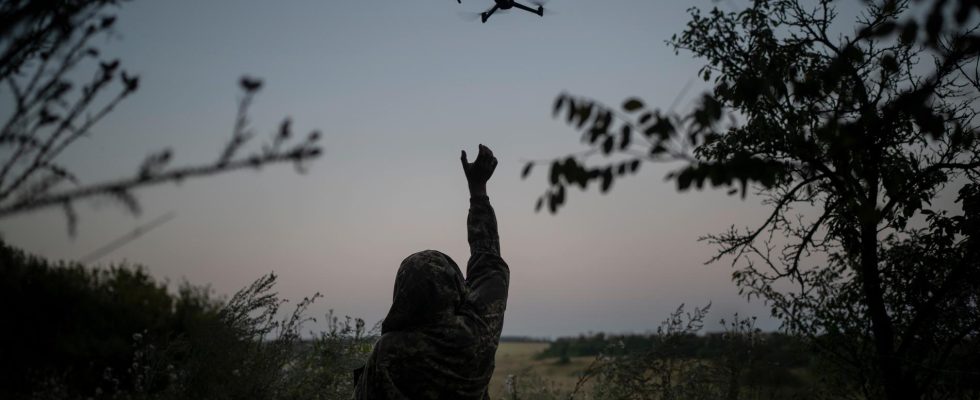1 / 3 Photo: Bram Janssen/AP/TT
The Vampire drone is part of the construction of a new state-of-the-art drone army that will create an advantage for Ukraine in the war.
But as the Ukrainians gain the upper hand, the Russians adapt and catch up, which constantly calls for new solutions on the battlefield.
The Ukraine war is increasingly about warfare with drones. They can be used for reconnaissance, to drop bombs or explode themselves when they hit their targets.
During an offensive near the occupied city of Bachmut in the eastern parts of the country, Ukrainian-made Vampire drones are being used.
– The drones see at night as in daylight, says a drone pilot who goes by the name Groove to CNN, who has been accompanied during the operation.
The soldiers have night vision equipment which gives the pilots an important advantage at night.
– We see the infantry, we hit the vehicles, guns, everything we need to destroy, says Groove.
Video clips filmed by night cameras show the drones dropping bombs on Russian armored vehicles.
The Ukrainian government wants to invest the equivalent of over SEK 11 billion in upgrading the country’s drone capacity. A Vampire drone can carry up to 15 kilograms of cargo, according to the Minister of Digital Transformation, also Deputy Prime Minister, Mychailo Fedorov.
Cable ties and silver tape
The AFP news agency has accompanied a commander who goes by the name Giocondo on the battlefield. Near the occupied town of Svatove in northeastern Ukraine, his unit has spent months modifying drones to make them fly further behind enemy lines and better evade detection by the Russians.
All of Giocondo’s drone police are volunteers. Many of them had no military experience before the Russian invasion.
In a barn, the soldier Bakeneko puts on a display on his head and immediately sees an aerial view of green fields, Russian combat vehicles and soldiers. He flies a drone with explosives against a Soviet tank that was spotted by a reconnaissance drone shortly before.
Another soldier, who before the war worked as a sales manager, prepares bombs a few meters away. With cable ties and silver tape, he attaches an artillery shell and batteries that turn a cheap commercial drone into a killing machine.
Scanning the area to find a target takes several hours, and Russian soldiers have gotten better at camouflaging themselves in the foliage. But when Bakeneko’s target is in sight, he crashes the drone. In his display, where the countryside is first seen rushing towards him, everything goes black.
– Great, we got it, says Giacondo who has been looking at a separate screen showing a plume of smoke from the tank.
Own solutions
The increasing use of short-range drones has led the Russians to use jamming devices to a greater extent, according to the Ukrainians. It has forced Giocondo’s unit and others to invent creative countermeasures.
After three months, Ukrainian soldiers in the village of Andriivka, south of Bachmut, have figured out how to escape the jamming devices that for a period blocked their drones.
That solution led to the village being retaken at the beginning of September. A spokesperson for the battalion that retook the village has claimed that exploding drones were crucial because they forced the Russians to back heavy weapons by about a mile and a half to be out of range of the drones.
But Ukrainian drone pilots believe the Russians will learn from what happened, adapt again, and the hunt continues.
– This is an interactive, two-sided competition, says Stephen Biddle at the think tank Council on Foreign Relations (CFR), to AP.
